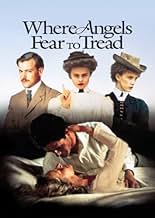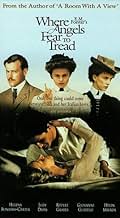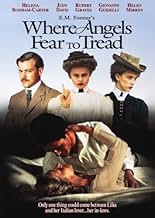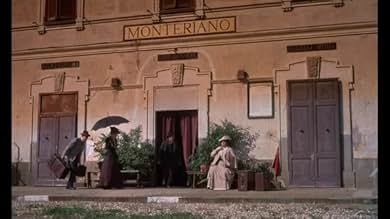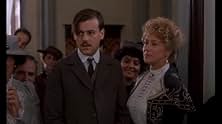Nachdem eine reiche Edwardianische Witwe impulsiv einen hübschen, aber armen toskanischen Zahnarzt heiratet und bei der Geburt stirbt, versuchen ihre englischen Schwiegereltern, das Sorgerec... Alles lesenNachdem eine reiche Edwardianische Witwe impulsiv einen hübschen, aber armen toskanischen Zahnarzt heiratet und bei der Geburt stirbt, versuchen ihre englischen Schwiegereltern, das Sorgerecht für das Baby zu erlangen.Nachdem eine reiche Edwardianische Witwe impulsiv einen hübschen, aber armen toskanischen Zahnarzt heiratet und bei der Geburt stirbt, versuchen ihre englischen Schwiegereltern, das Sorgerecht für das Baby zu erlangen.
- Auszeichnungen
- 1 wins total
Empfohlene Bewertungen
Cultures clash when Philip Herriton is forced by his mother to retrieve the only child of his dead sister-in-law, Lilia, from its Italian father. The baby represents both the English and Italian way of life, and the ensuing struggle over it is an analysis of just how futile our own nativist prejudices can be.
Such a sensitive topic is dealt with by a charming cast. Rupert Graves is perfect as a man transformed by his horrific experiences; Helen Mirren is both laughable and lamentable as the tragically flighty Lilia; Helena Bonham-Carter is the soul of goodness, and Judy Davis (a Forster veteran from "A Passage to India") provides comic relief as stuffy Harriet. These fine performances are matched with a beautiful score by Rachel Portman and even more beautiful Italian vistas courtesy of Mr. Sturridge.
Stimulating and provocative, I highly recommend this film to those interested in either Forsters' work or the imperialistic inclinations of the British circa 1900.
Forster was a homosexual, an Italophile, and scornful of Edwardian British mores and (perceived) hypocrisy. I have no problem with any of those things, but in this, his first novel, it's as if his main intention was to telegraph these things to the audience, and he sets his characters up to that end, but it's never convincing as the natural actions of real humans. If you must watch it, enjoy the Tuscan scenery while you can, but you may want to fast forward through the second-half. For completists only.
Wusstest du schon
- WissenswertesThe movie and source novel's title is derived from stanza in the poem "An Essay on Criticism" (1709) by Alexander Pope. It reads: "Nay, fly to Altars; there they'll talk you dead; For Fools rush in where Angels fear to tread".
- PatzerIn a scene outside on the veranda in Gino's house in Italy, Lilia (Helen Mirren) has her back to the view of the countryside. At one point, when the camera is on her, a white van can be seen driving along the road in the distance. It is clearly a 1990s-era vehicle, moving much faster than automobiles of the era could have.
- Zitate
Mrs. Herriton: [Speaking about Italy] It may be filled with churches and beautiful pictures, but you can only judge a country by its men.
Top-Auswahl
- How long is Where Angels Fear to Tread?Powered by Alexa
Details
- Erscheinungsdatum
- Herkunftsland
- Sprachen
- Auch bekannt als
- Where Angels Fear to Tread
- Drehorte
- Montepulciano, Siena, Tuscany, Italien(on location)
- Produktionsfirmen
- Weitere beteiligte Unternehmen bei IMDbPro anzeigen
Box Office
- Bruttoertrag in den USA und Kanada
- 1.403.033 $
- Eröffnungswochenende in den USA und in Kanada
- 42.404 $
- 1. März 1992
- Weltweiter Bruttoertrag
- 1.403.033 $
- Laufzeit1 Stunde 48 Minuten
- Farbe
- Sound-Mix
- Seitenverhältnis
- 1.85 : 1
Zu dieser Seite beitragen



